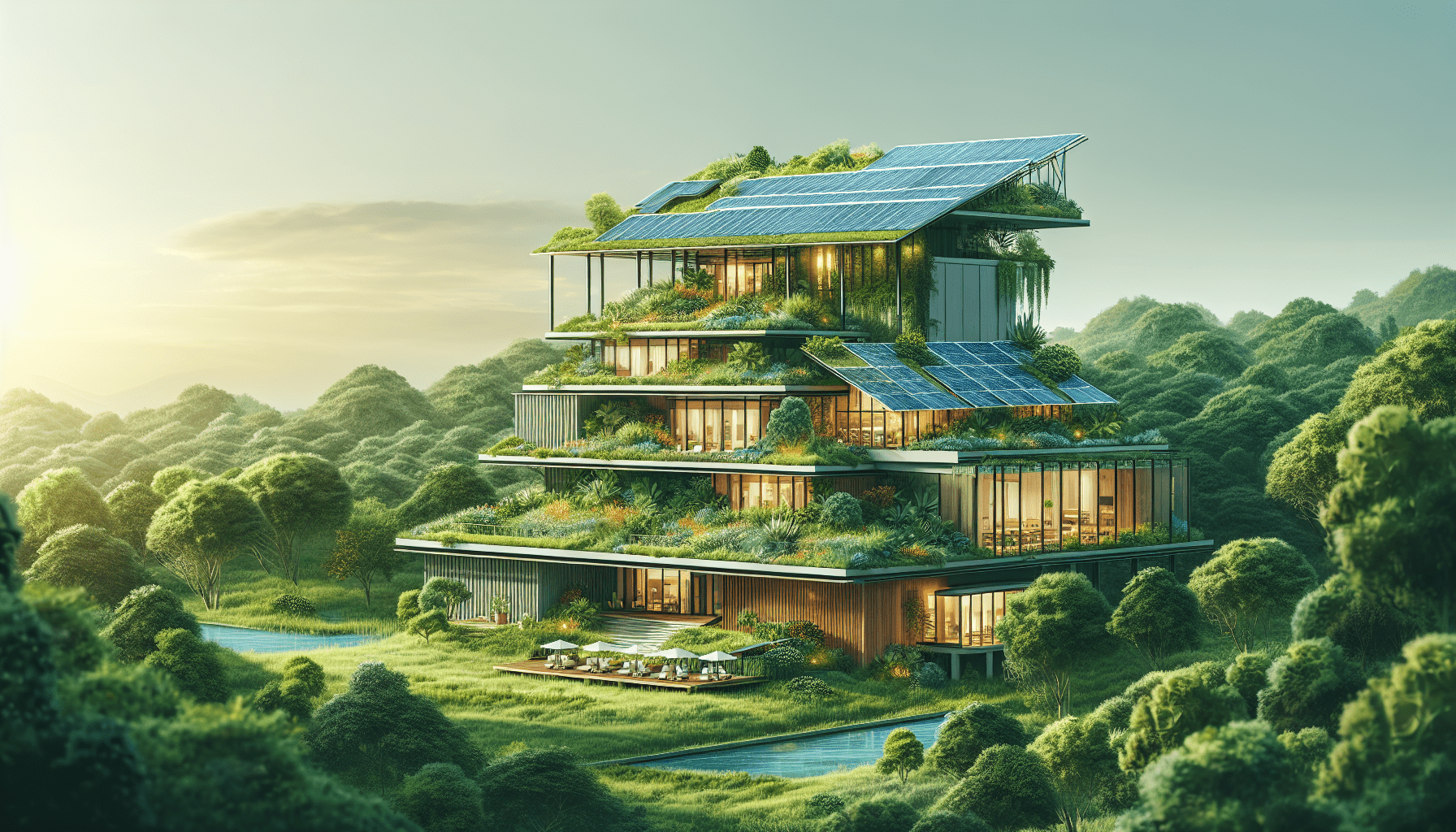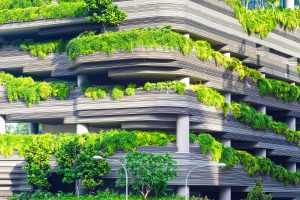In our journey towards a more eco-friendly future, it’s inspiring to explore the innovative field of sustainable architecture. This article delves into the core principles that define sustainable architecture, such as energy efficiency, the use of renewable resources, and creating harmonious designs that respect and incorporate natural surroundings. We’ll uncover how these principles not only reduce the environmental footprint of our buildings but also enhance the quality of life for everyone. By understanding and applying these concepts, we can all contribute to a healthier, more sustainable world. Have you ever wondered what principles guide the design of buildings that are both eco-friendly and efficient?
What Are The Principles Of Sustainable Architecture?
Sustainable architecture is an approach to building that seeks to minimize environmental impact and promote healthier living spaces. It’s about creating structures that are not only aesthetic but also responsible and efficient. In this article, we’ll delve into the key principles that drive sustainable architecture and explore how they are implemented in practice.
Understanding Sustainability in Architecture
Before diving into the principles, it’s essential to understand what we mean by sustainability in architecture. Sustainable architecture aims to reduce the negative environmental impact of buildings through efficient energy use, responsible material selection, and the promotion of a healthy living environment.
Principle 1: Energy Efficiency
Energy efficiency is a cornerstone of sustainable architecture. By reducing the amount of energy a building consumes, we can significantly lower its environmental footprint.
Passive Solar Design
One fundamental aspect of energy efficiency is passive solar design. This involves planning the building’s orientation, window placement, and materials to naturally regulate temperature and minimize the need for artificial heating and cooling.
High-Performance Insulation
Proper insulation is another critical factor. High-performance insulation materials help maintain indoor temperatures, reducing the need for heating and cooling systems and promoting energy savings.
Efficient Lighting Systems
Using energy-efficient lighting, such as LED bulbs, can drastically cut down on electricity consumption. Smart lighting systems that adjust based on occupancy and natural daylight also contribute to energy conservation.
Principle 2: Water Efficiency
Water is a precious resource, and its efficient use is crucial in sustainable architecture.
Low-Flow Fixtures
Implementing low-flow faucets, showerheads, and toilets can reduce water use significantly without compromising performance.
Rainwater Harvesting
Rainwater harvesting systems collect and store rainwater for non-potable uses like irrigation and flushing toilets, reducing the demand on municipal water supplies.
Principle 3: Sustainable Materials
Choosing the right materials can make a big difference in a building’s sustainability.
Recycled and Reclaimed Materials
Using recycled or reclaimed materials, such as wood, metal, and glass, helps conserve natural resources and reduce waste.
Locally Sourced Materials
Materials sourced from local producers require less transportation, reducing their carbon footprint. They also support local economies.
Low VOC Materials
Low volatile organic compound (VOC) materials contribute to better indoor air quality, which is healthier for occupants.
Principle 4: Indoor Environmental Quality
The quality of the indoor environment is paramount for the health and well-being of occupants.
Natural Ventilation
Proper ventilation is essential for maintaining good indoor air quality. Natural ventilation systems can help circulate fresh air without relying on energy-intensive HVAC systems.
Daylighting
Maximizing natural light not only reduces the need for artificial lighting but also enhances the indoor environment’s comfort and productivity.
Thermal Comfort
Designing for thermal comfort ensures that the indoor environment remains at a comfortable temperature year-round. This often involves combining good insulation with strategic natural ventilation and shading.
Principle 5: Sustainable Site Development
The location and development of a building site can significantly impact its sustainability.
Site Selection
Choosing sites with minimal environmental impact, such as previously developed land or areas with good access to public transportation, can reduce the carbon footprint associated with construction and daily use.
Landscaping and Green Roofs
Incorporating native plants and green roofs can help manage stormwater, reduce urban heat islands, and improve insulation.
Minimizing Land Disturbance
Limiting the disturbance of the natural landscape during construction helps preserve local ecosystems and biodiversity.
Principle 6: Waste Reduction
Waste management is a critical component of sustainable architecture.
Construction Waste Management
During the construction phase, implementing a waste management plan that emphasizes recycling and reusing materials can significantly reduce landfill waste.
Principle 7: Long-Term Durability and Adaptability
Buildings that last longer and can adapt to changing needs are inherently more sustainable.
Durable Materials
Choosing materials that are durable and low-maintenance means that the building will require fewer resources over its lifetime.
Flexible Design
Designing buildings to be adaptable to different uses over time ensures they remain functional and relevant, reducing the need for new construction.
Principle 8: Renewable Energy Integration
Incorporating renewable energy sources is a key practice in sustainable architecture.
Solar Panels
Installing solar panels can provide a significant portion of a building’s electricity needs from a renewable source.
Wind Turbines
For some locations, small wind turbines can be a viable option for generating renewable energy.
Principle 9: Environmental Impact Assessment
Performing an environmental impact assessment (EIA) is necessary to understand a project’s potential effects on its surroundings and to develop strategies for mitigating those effects.
Life Cycle Assessment (LCA)
An LCA evaluates the environmental impacts associated with all stages of a product’s life, from raw material extraction to disposal. In architecture, this means considering how building materials are sourced, used, and disposed of.
Principle 10: Social Sustainability
Finally, sustainable architecture isn’t just about the environment—it’s also about creating spaces that support communities and people.
Inclusive Design
Designing buildings that are accessible to people of all abilities ensures that everyone can use and enjoy public and private spaces.
Community Engagement
Involving the community in the planning and design process ensures that the building meets the needs of those who will use it and fosters a sense of ownership and responsibility.
Implementing Sustainable Principles: A Practical Approach
To see how these principles are put into practice, let’s look at some real-world examples.
Case Study: The Bullitt Center
Often referred to as the “Greenest Commercial Building in the World,” the Bullitt Center in Seattle embodies many of the principles of sustainable architecture.
Energy Efficiency
The Bullitt Center’s energy needs are met through a combination of passive solar design, high-performance insulation, and a rooftop solar array capable of generating all of the building’s energy.
Water Efficiency
An onsite rainwater harvesting system collects enough water to meet the building’s needs, and all wastewater is treated and reused onsite.
Sustainable Materials
The building is constructed from locally sourced and sustainably harvested materials, ensuring lower environmental impact and supporting local industries.
Case Study: Bosco Verticale
The Bosco Verticale, or Vertical Forest, in Milan, Italy, is a residential tower with a focus on integrating green spaces into urban living.
Sustainable Site Development
This project reduces urban sprawl by building vertically and incorporates extensive landscaping with over 900 trees and various plants to provide natural insulation, improve air quality, and enhance biodiversity.
Indoor Environmental Quality
The extensive vegetation on the building’s exterior helps regulate the internal temperature, provides natural shading, and reduces noise pollution, contributing to a more comfortable living environment.
Case Study: Druk White Lotus School
Located in Ladakh, India, the Druk White Lotus School combines traditional knowledge with modern sustainable practices.
Renewable Energy Integration
Solar panels and passive solar heating are utilized to counter the harsh climate of Ladakh, ensuring the school maintains a comfortable indoor environment with minimal energy use.
Water Efficiency
The school uses rainwater harvesting and composting toilets, aligning with local water scarcity issues and promoting sustainability in a challenging environment.

The Role of Technology in Sustainable Architecture
Technology plays a pivotal role in advancing sustainable architecture, helping to make buildings more energy-efficient and environmentally friendly.
Building Information Modeling (BIM)
BIM software allows architects to create detailed 3D models of buildings, enabling thorough analysis of materials, energy use, and environmental impact, ensuring sustainability is incorporated at every design stage.
Smart Building Systems
Smart building systems optimize energy use by automatically adjusting lighting, heating, and cooling based on occupancy and external conditions, enhancing both efficiency and comfort.
Renewable Energy Technologies
Innovations in renewable energy technologies, such as more efficient solar panels and small-scale wind turbines, have made it easier and more cost-effective to integrate renewable energy into building designs.
Education and Training in Sustainable Architecture
To promote widespread adoption of sustainable architecture, education and training are crucial.
University Programs
Many universities now offer degree programs in sustainable architecture, providing the next generation of architects with the knowledge and skills needed to design environmentally responsible buildings.
Professional Development
Architects currently practicing in the field can benefit from continuing education courses on sustainable design principles and green building certifications, such as LEED (Leadership in Energy and Environmental Design).
The Future of Sustainable Architecture
As we look to the future, sustainable architecture will continue to evolve, driven by advancements in technology, growing environmental awareness, and an increasing commitment to sustainability at all levels of society.
Innovations on the Horizon
Emerging technologies like 3D-printed buildings, advanced materials with improved environmental profiles, and even net-positive buildings that generate more energy than they consume are set to further revolutionize sustainable architecture.
A Collective Effort
By embracing sustainable practices and supporting policies that promote environmental responsibility, we can collectively help shape a built environment that is both sustainable and resilient, meeting the needs of present and future generations.
Conclusion
So, what are the principles of sustainable architecture? They encompass energy efficiency, water conservation, the use of sustainable materials, and indoor environmental quality, among others. By understanding and implementing these principles, we can create buildings that are not only kind to the planet but also healthier and more enjoyable for the people who use them. Whether you are an architect, a developer, or simply someone interested in sustainability, embracing these principles can make a significant difference in our world. Let’s work together to build a greener, more sustainable future.



